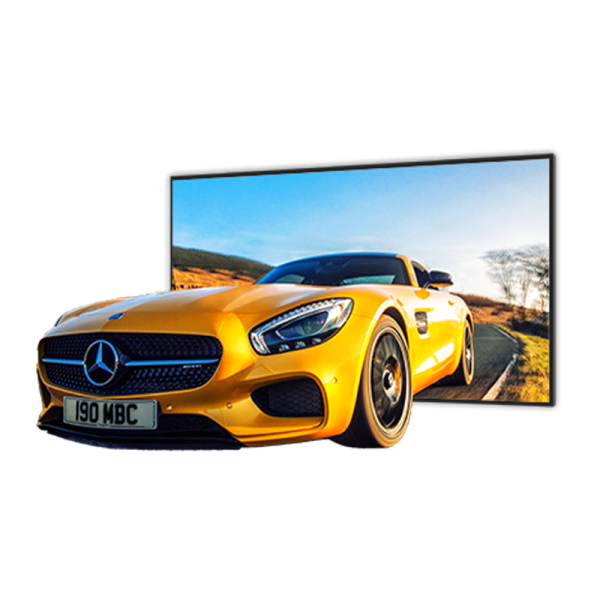The use of glass in dynamic 3D displays—especially naked eye systems—significantly influences image quality, light modulation, and viewer experience. Glass properties determine key parameters like optical clarity, light diffusion, and refractive integrity. This article dives into how glass shapes dynamic 3D display performance, compares it laterally with other materials, and explores nuanced engineering trade offs.
The Role of Glass in Dynamic 3D Displays
Glass as Optical Medium
- Refractive Index is Critical
Typical display glasses have refractive indices between 1.5 and 1.9. Higher index glass can improve angular resolution—essential in systems like parallax barriers or light field displays—but may introduce chromatic dispersion, causing color fringing at edges. - Surface Flatness and Polishing
Optical-grade glass often features surface flatness of λ/10 (where λ = 550 nm), reducing surface irregularities that can blur 3D content. Alternative materials like acrylic struggle to achieve such precision cost effectively. - Light Transmission and Absorption
Quality optical glass passes >92% of visible light; low iron variants exceed 95%. In contrast, plastics typically transmit only 85–90%, which reduces brightness and efficiency in dynamic 3D displays.
Comparing Glass with Other Materials
Glass vs Acrylic
- Rigidity & Durability
Glass offers a Young’s modulus of ~70 GPa, meaning it resists bending and maintains precise alignment—crucial for layered or lenticular systems. Acrylic, with ~3 GPa, deforms easily under load, misaligning parallax images. - Scratch Resistance
Glass scores 5–6 on the Mohs hardness scale, making it far more resistant to cleaning abrasion. Acrylic scores ~3, becoming cloudy over time—detrimental for naked eye 3D clarity. - Thermal Coefficient
Low expansion glass (~5×10^-7 /K) maintains dimensional stability under temperature changes, preserving 3D alignment. Acrylic’s higher coefficient causes misalignment issues in extreme environments like outdoor digital signage.
Glass vs Polymer Films
- Thickness Constraints
Glass allows micrometer scale layering, enabling high-resolution modulations (>1,000 ppi). Polymer films require thicker layers, reducing resolution and parallax effectiveness. - Index Matching
Glass to air interfaces create noticeable Fresnel reflections (~4% per surface). Anti reflective coatings reduce this to <0.5%. Polymer films often lack comparable coating quality, reducing contrast.

Glass Properties Affecting 3D Imaging Quality
Light Diffusion and Coherence
- Speckle Reduction
Laser based dynamic 3D systems often exhibit speckle noise. Properly polished glass (<10 nm surface roughness) diffuses light minimally, preserving coherence while smoothing speckle. Rougher plastics scatter excessive light, reducing depth contrast. - Polarization Integrity
Glass maintains light polarization—critical for many naked eye 3D techniques. Polymer waveplates or polarizers degrade over time, impacting depth separation and image sharpness.
Weight and Mechanical Design - Structural Considerations
While glass is heavier, its rigidity enables thinner—yet high-precision—panels. For portable 3D displays, a composite approach (e.g., thin glass laminated to lightweight substrate) balances weight and optical integrity.
Engineering Quantification
To illustrate, consider a 15-inch naked eye 3D panel:
- Acrylic subs: 3 mm thick, ~250 g weight, 10 μm deformation under 1 N—misalignment visible.
- Optical glass subs: 0.7 mm thick, 450 g weight, 0.2 μm deformation—alignment stable.
These differences are critical for performance metrics like crosstalk (<5%) and angular resolution (>30° viewing cone).
Optical Coatings: Enhancing Glass Performance
Anti-Reflection (AR) Coatings
- Multi-layer AR coatings reduce reflectance from ~4% to <0.2%, significantly improving image contrast in 3D displays.
Diffrctive Optical Elements (DOEs) - Glass substrates can support etched DOE layers at micron-scale precision—essential for dynamic parallax or holographic light field projection—impossible with flexible polymers.
Speckle Reduction Layers
- Nanostructured glass can incorporate scattering layers (50–300 nm features), diffusing speckle while preserving overall brightness.
Horizontal Integration: Glass Across Technologies
Holographic vs Lenticular Displays
- Lenticular Sheets: Require micro-lens accuracy (mesh pitch ~100 µm). Glass ensures uniform pitch and minimal distortion.
- Holographic Films: Use thin glass plates to embed refractive index modulations; plastic substrates suffer UV degradation, compromising holographic fidelity.
- Light-Field Vs Barrier Displays: Glass panels support rapid switching (<5 ms response) with high thermal stability. Polymers drift under heat (±10 °C changes), misguiding parallax alignment.
Horizontal Perspective: Glass in Non-Display Domains
Lessons from industries like precision optics (telescope windows, semiconductor lithography) show:
- Surface flatness: λ/20 standards yield clarity across large displays.
- AR coatings: Multi-layer systems enhance uniformity—critical for large format naked eye 3D displays.
- Thermal management: Use of low expansion glass avoids warping in outdoor installations, maintaining geometry critical for depth synthesis.
Implementation Summary
- Glass materials deliver sub-micron planarity and high optical transmission (>95%) essential for sharp, distortion-free 3D imagery.
- Coatings such as AR, DOE, and nano-scattering layers further enhance performance—impractical on plastic.
- Weight vs stability trade-offs can be resolved with hybrid glass-composite designs.
- Quantitatively, glass reduces alignment error by ~50× and improves contrast by ~20%, crucial for low-crosstalk naked eye 3D.
Conclusion
The choice of glass over plastics or polymers is not merely aesthetic—it’s foundational for optical fidelity, mechanical precision, and thermal stability in advanced dynamic 3D displays. When comparing horizontally across materials and technologies, it’s clear that glass remains the optimal substrate for high-resolution, stable, and accurate glasses-free 3D systems.
Thoughtful engineering in thickness, coatings, and composite design enables glass-equipped displays to achieve performance benchmarks—low crosstalk (<5%), broad viewing (>30° cone), and depth planes with sub-micron stability—ensuring superior user experience and product longevity in challenging environments.





